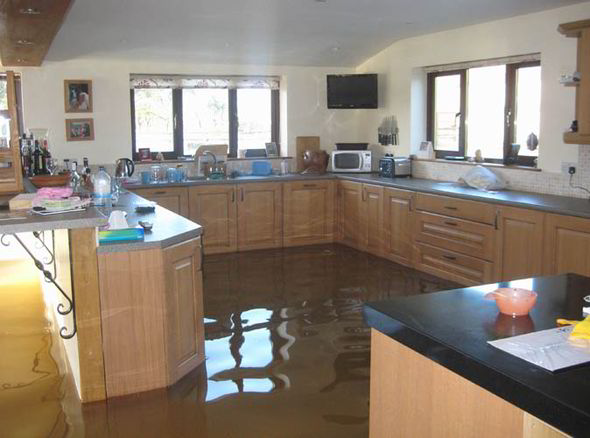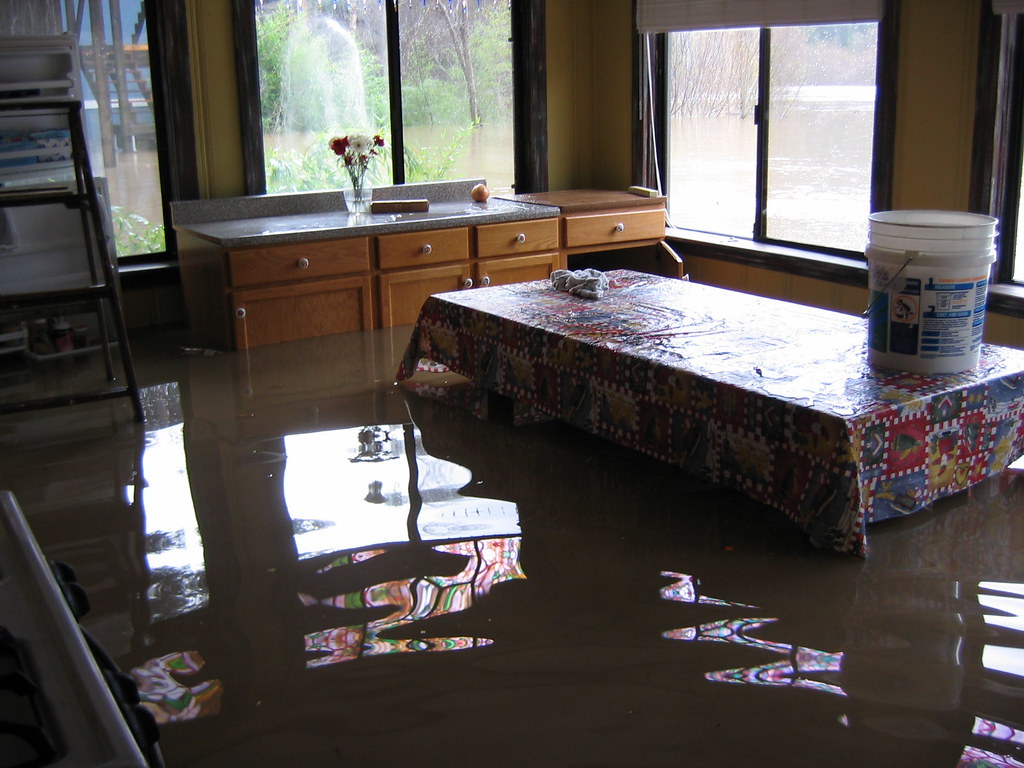Tips for Water Damage Repair
Tips for Water Damage Repair
Blog Article
We have encountered this post pertaining to Water Damage in Kitchen directly below on the net and concluded it made sense to talk about it with you here.

The cooking area is the room where a great deal of water activity takes place. You can rarely do anything without utilizing water in the cooking area, from cooking, cleansing, and doing the meals.
Hence, checking your cooking area every now and then is a requirement. This is because it has a higher opportunity of getting water damage because of the devices you use there.
When malfunctioning, these devices that control water might make your cooking area messy as well as impact the framework of your building over time.
Allow's examine out some causes of the water damage in the kitchen area as well as what you need to look out for.
Some Sources Of Water Damages in the Kitchen
These are a few root causes of water damage in the cooking area.
Faulty Drain Pipeline
Drain Pipelines are essential parts of our residences, especially in our kitchens and bathrooms. Nonetheless, they get faulty by getting blocked, split, as well as ruptured. Or worse, they can be incorrectly or loosely linked; whichever the situation might be, it can be an extreme trouble.
Damaged drainpipe pipelines can create water damage and also, therefore, cause mold development and disfigure the appearance of your wall surface. It can additionally make the damaged location look unpleasant.
Consequently, it is suggested constantly to examine to make certain that all the pipelines remain in good condition as well as get a sound plumbing system to maintain and fix any concerns.
Faulty Cooking Area Sink
The cooking area sink is a crucial as well as many used part of the kitchen. Therefore it is prone to water damage; problems such as blocked pipes, dripping pipelines, as well as defective faucets.
These problems can be irritating, especially when one is active in the kitchen area. It does not just take place without providing a hint or a sign. So below are some indications to know when your sink is not all right
These are the significant damages that can occur to your cooking area sink. One means to stop this damage is by making certain that food particles do not get right into the pipelines. You are also inspecting the taps and also pipes and making sure that it is effectively fixed as well as in good condition.
Dripping Dish washer
Dishwashers make life in the kitchen area much easier. Nonetheless, it is an optional kitchen appliance as well as, when offered, can be a resource of water damage. Furthermore, like various other equipments, it will certainly develop faults in time, despite upkeep.
Among the mistakes is dripping through the door or beneath the dishwashing machine. These faults establish as a result of age, splits, incorrect use, loosened web links to pipes, etc.
Faults due to age come from constant usage. Because of this, the door leakages because of opening up as well as shutting.
Additionally, mistakes from the incorrect use might create water damage by presenting cracks to it. For this reason, it is a good idea to comply with the hands-on guide of the dishwashing machine to avoid this specific damage.
The leakages under the dishwashing machine can come from fractures in the gasket, hose pipe, and loose or incorrect connection to water pipes or drains.
This kind of leakage usually goes undetected as well as can be there for a very long time. However, due to the moment structure, it might damage the floor and create mold and mildew development.
Much more so, the longer the water remains, you will certainly discover the warping of the flooring where the dish washer is. This is a great sign to keep an eye out for when examining if your dishwashing machine leaks. Finding and repairing this on schedule prevents significant water damage to your flooring.
Bottom Line
Keeping an eye out for damages in your kitchen can be entrusting however necessary. It makes your job there simpler and also much safer.
However, the reasons noted above are just a couple of aspects to consider, specifically if your kitchen area has a great deal of home appliances.
Obtain a specialist plumbing solution to come around as well as check for any type of damages as well as obtain them fixed.
It makes your kitchen location wet as well as unpleasant, particularly when trickling from the pipes. As well as if it is trickling from the faucet, it leads to water wastefulness.
It is an optional kitchen home appliance and also, when available, can be a resource of water damage. Extra so, the longer the water stays, you will certainly see the warping of the flooring where the dishwashing machine is. Detecting and repairing this on time prevents serious water damage to your flooring.
Flooded Kitchen – What to Do
Coming home to a flooded kitchen can be an unpleasant surprise as you immediately start thinking about how much this problem will cost to fix. While the feeling can be frustrating, there are actually a number of steps you can take to eliminate extra time and costs when it comes to making the repairs and restoring the water damage. However, if you are able to make the repairs yourself, it is still important to have the area inspected by a professional to ensure that the problem does not return in the future.
What causes kitchen flooding?
Kitchens can flood for numerous reasons, some of which are out of the homeowner’s control. Overflowing sinks, for example, are just one cause of a kitchen flood. Clogs can send wastewater back up through the sink drain and into the kitchen.
Furthermore, kitchen faucets can leak when the pipes around the water supply line become corroded. Pipes can loosen or crack, and even new PVC pipes are vulnerable to developing small cracks. When gaskets wear out along areas where the pipe meets the faucet, leaks and subsequent flooding can occur.
How to clean up kitchen flood?
If the flooded area is not severe, you may be able to dry it out yourself with a mop and bucket; however, for larger areas, don’t hesitate to call a water damage restoration professional. In addition, if you can see that the problem has been ongoing for a few days or more, you will want to contact a mold remediation professional as it is likely that the fungus has developed over time. But while waiting for the technicians to arrive, you can get a head start on the drying process by taking the following steps:
Remove all excess water. If you have a shop vac that is able to remove water, this would be the most efficient tool. Otherwise, a mop and a bucket will be handy. Increase air flow. After the excess water has been removed, it is likely that the building materials and furnishings are still wet. To dry them out, turn on the air conditioner or dehumidifier. If weather conditions are dry, open the exterior windows to allow for additional air to circulate the property. However, if sewage water has seeped into the air conditioning unit, do not use it. Open drawers and cabinets. Moisture can easily accumulate within these smaller areas; be sure that they are all open to allow dry air to flow throughout the space. Avoid damaged electrical items. If any kitchen appliances, such as the toaster, blender, microwave, oven, etc. have been damaged by the water, do not use them. Have them inspected by a professional to determine if they are safe to reuse. Do not lay down magazines or newspaper. Although paper is quick to retain water, the ink will quickly bleed onto the floor and cause a bigger mess. Dry off wet furniture. If any upholstery has been damaged from the water, wipe them down thoroughly. But be careful when drying off wood furniture; this type of material becomes severely weakened after having contact with water. How to Clean Wet Cabinets in a Flooded Kitchen
A flood caused by any of the abovementioned scenarios will lead to water damaged kitchen cabinets. Cleaning the water damaged cabinets right away is important since water damage spreads quickly. Whether the cabinets are made of wood or plywood, proper cleaning tactics help salvage them.
Upon removing the standing water, remove the cabinet doors and dry them with a household fan. Keep the cabinet doors flat to prevent warping. The cabinets should also be dried—however, with multiple high-volume fans and a dehumidifier that run over the course of one full day.
https://restorationmasterfinder.com/restoration/flooded-kitchen-what-to-do/

We had been made aware of that editorial on How To Prevent Water Damage To Your Kitchen through someone on our other site. For those who liked our blog post if you please don't forget to share it. We love reading our article about Most Common Causes of Residential Water Damage .
This Resource Report this page